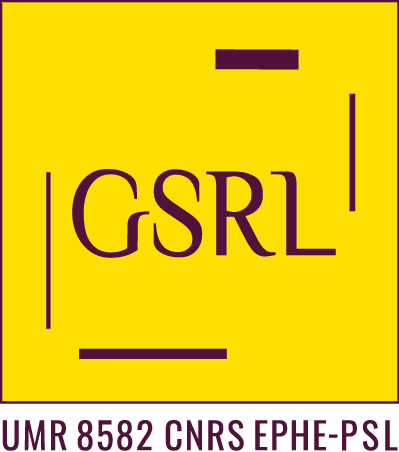
Chers collègues,
1/ Notre prochain Séminaire des Etudes mongoles et sibériennes se tiendra le mercredi 11 mars 2020 au 54, boulevard Raspail, salle 17 (sous-sol) de 14h à 16h
Nous aurons le plaisir d’écouter Valeriya Gazizova (MIASU, Cambridge) (en anglais) sur : Sacred Heights in the Topography of Depression: Ovaa Kurgans and Their Agency in the Kalmyk Buddhist Landscape
Résumé :
In contrast to other Mongolian areas, the ritual structures of stones, wood, scarves, etc. widely known across Inner Asia as ovoo (Mon. oboo; Tib. lha tho, la rtse; Kalm. ovaa) were not historically vivid on the Kalmyk steppes and are far from being ubiquitous in Kalmykia today. Since their migration to the Northern Caspian, the Kalmyks have attributed the ritual, political and functional roles of the ovoo cairns to steppe kurgans or ancient burial mounds that abound throughout the North Caucasus and Caspian Depression, the oldest dating from the early Bronze Age.
Based on periodic fieldwork from 2011 to 2018, this talk is concerned with Kalmyk terminology, certain ritual practices and discourses constructing the steppe burial mounds as reference points of reinvented sacred geographies and histories. Focusing on several examples of particular ovaa kurgans, I shall present popular narratives, archeological findings and public events in connection with the chosen sites in order to explore how these landscape entities are conceptualized as powerful agents of the Kalmyk Buddhist and ethno-cultural renewal. Whether ovaa kurgans can be situated within the category of the sacred ovoo cairns of Inner Asia or whether they present a separate type of ritual structure is another set of questions the talk raises.
2/ Par ailleurs, Vareriya Gazizova interviendra au Groupe Sociétés, Religions, Laïcités dans le Séminaire de l’axe « Interactions et créativités religieuses : perspectives anthropologiques », le 10 mars 2020 sur : « Secret Buddhism’ of the Soviet era and its representations in Kalmyk popular hagiography and visual art »
Cette 2e conférence aura lieu de 14 à 17 h sur le Campus Condorcet : en salle 5.067, 5ème étage, Bâtiment de Recherche Nord, 93 322 Aubervilliers ; Métro : Ligne 12 – Front Populaire
Résumé
Through the lens of oral histories and visual art, the talk explores the construction of public memories and proliferating deification of dissident Buddhist monastics who secretly conducted rituals, gave initiations into Tantric practices and healed by means of Tibetan Buddhist medicine during the Soviet period in Kalmykia. Situated to the northwest of the Caspian Sea, Kalmykia is one of the three ‘autonomous republics’ of Russia where Buddhism is historically practised by its titular population, the westernmost branch of Mongolian peoples. The Stalinist purges of the 1930s erased the Kalmyk Buddhist establishment from the public scene, and until the late 1980s, Buddhism and indigenous forms of popular worship and folk healing remained illegal in Kalmykia. Despite the state persecution, unofficial underground religious centres – if not movements – were functioning around Kalmyk returnee monastics, who had received a Buddhist education (in Russia or abroad) before the Soviet anti-religious campaigns and survived years in Gulag prison-camps. Focusing on the decades of late socialism (1960s – 1980s), commonly known in Kalmykia as the time of ‘secret Buddhism’, I discuss forms of secrecy that were at play in relation to Kalmyk underground Buddhist agents in the situation of a coexistence of politically and culturally antagonistic planes – the plane of communist and that of Buddhist.
Paradoxically or not, these ‘secret lamas’ of the Soviet era have become the focus of contemporary public worship, with new icons (Tib. thang ka) and temples (Kalm. khurul) devoted to them and stories about their magic abilities abounding. Their former places of residence have become pilgrimage sites, associated with miraculous recoveries. The Soviet era, with its political repressions and anti-Buddhist policy, appears essential in this developing hagiography. The talk addresses the incorporation of the ‘Soviet’ into Kalmyk Buddhist cosmology drawing on representations of this process foremost in visual art. Exploring the relationship between memory, history and identity formation, I shall feature contemporary Kalmyk representations of both the ‘Soviet’ and ‘Tibet’ as ‘elsewhere spaces’ which have become instrumental in constructing what is now often defined as the ‘authentic Kalmyk religion’.
En espérant vous voir nombreux,
Isabelle Charleux, Grégory Delaplace, Sandrine Ruhlmann et Virginie Vaté



